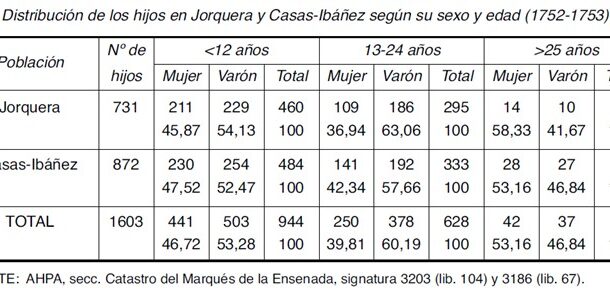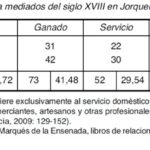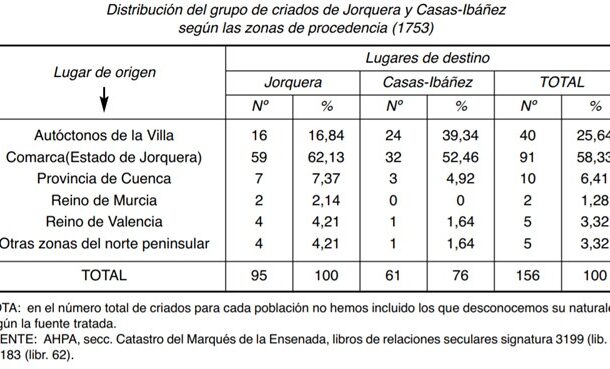
The servants were, within the households, a productive part of the family economy in the rural world. In this context, the data offered by the author with the analysis of the towns of Jorquera and Casas Ibáñez, in the province of Albacete, go in this direction. The majority of the servants (73 out of 176) were livestock servants, followed by domestic servants (52) and labour servants (40). Thus, the majority of servants were linked to agricultural and livestock tasks (64.2%). It was also common for wealthy families to have servants who served more for ostentatious than productive purposes. They accounted for 29.54%, 80% of whom were named after women. Their work was centred on domestic assistance and care. In contrast to livestock and labour servants, service servants tended to live in their masters’ homes. Finally, in the “others” section of the resource, we find servants serving in the trades of merchants, artisans and other liberal professions, which were in the minority in this rural environment and whose performance did not require a servant so much as an apprentice son. Six per cent, 11 out of 176, corresponded to this type of work.
Collection: Statistics
Project: 3. Rural world and urban world in the formation of the European identity., 4. Family, daily life and social inequality in Europe.
Chronology: XVIII
Scope: Secondary Education, Baccalaureate, University
Link: https://www.adeh.org/revista/2009,%202/MM%20SimA%CC%82%C2%A2n%20GarcA%CC%82%C2%B0a.pdf
Resource type: Statistics
Format: Table
Source: Simón García, María del Mar. (2009)."El hogar y su composición en la Mancha del Júcar a mediados del siglo XVIII", en Revista de Demografía Histórica, XXVII, 2, p. 175.
Language: Spanish
Date: 2009
Owner: Pablo Ballesta Fernández (Modernalia)
Copyright: ©Revista de Demografía Histórica ©María del Mar Simón García
Abstract: Typology of servants in a rural environment, a reflection of economic activity and family dependency
Image
Tags






